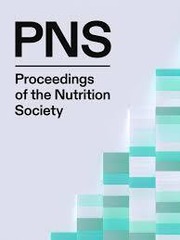It has been shown that exercise induces considerable changes in the body, particularly in the mucosal immune system(Reference Pedersen and Hoffman-Goetz1); the current lifestyles have promoted an increase in the consumption of high carbohydrate diets (↑CHO); these two factors result in particular effects on Peyer's patches (PP)(Reference Rogers, Berrigan and Zaharoff2). The objective of this study was to evaluate the effect of moderate exercise and ↑CHO on PP's T-cells (TLc) in Balb/c young mice. Thirty-two 21-d-old male mice were divided into four groups, two groups were taught to swim for 30 min 5 d per week during 9 weeks; one of which was fed a commercial control diet (CONTROL/E) and the other was fed a high carbohydrate diet (↑CHO/E) (DIO Rodent Purified Diet, Cat. 58Y2; energy: 4.65 kcal/g (19.4556 kJ/g), the other two groups were fed the same diets but were not made to swim (CONTROL and ↑CHO). Small intestines were dissected, PP were cut, macerated, filtered and centrifuged to obtain the lymphocyte pellet; cells were stained with anti-CD3+, CD4+ and CD8+ antibodies and analysed by flow cytometry (Facs Diva, BD®). The experimental diet increased the weight of mice who exercised (23.5, sd 1.3) compared with the non-exercise group (19.4, sd 1.8) and the control group (20.2, sd 1.4), P⩽0.005. CD3+ TLc were decreased in the ↑CHO/E group (31.1, sd 1.0) compared with the CONTROL/E group (38.8, sd 2.5), T 8.103, P⩽0.001; CD3+/CD4+ (23.2, sd 0.2), CD3+/CD8+ (3.5±0.5) also decreased compared with CONTROL/E group (33.5, sd 1.97 and 4.9, sd 0.5; t 14.8 and t 6.014 respectively, P⩽0.001). The combination of exercise and ↑CHO decreased significantly PP TLc, we can conclude that the intake of a high carbohydrate diet together with exercise attenuates lymphocytes transit, as well as increasing the weight of the mice (Fig. 1).

Fig. 1. Percentage of lymphocytes CD3+, CD3+/CD4+ and CD3+/CD8+ from PP from Balb/c mice, feeding with standard diet (CONTROL) or high carbohydrate diet (↑CHO); with or without 30 min of exercise (/E). Values are show in means and standard deviations (sd) n 8, differences were statistically significant by Student's t test at P⩽0.001. CONTROL: group with standard diet without exercise; ↑CHO: group with high carbohydrate diet; CONTROL/E: group with standard diet with exercise; ↑CHO/E: group feeding with high carbohydrate diet, and with exercise.
This project was financed by Universidad Autónoma del Estado de México.



